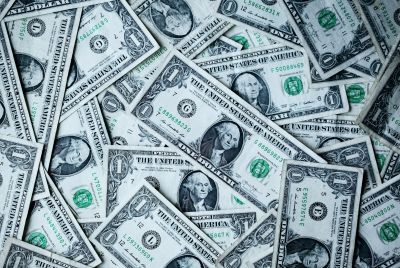Americans Living Paycheck to Paycheck Rises to 24% in 2025, Led by Millennials and Gen X: BofA Report
Data reflects a 'K-shaped economy' of high-income earners driving the bulk of consumer spending

The latest Bank of America (BofA) report reveals that 24% of American households are now living paycheck to paycheck, up slightly from 23.7% in 2024. This growing financial strain underscores the ongoing challenges faced by many amid rising inflation and stagnant wages.
Rising Financial Pressure Amid Inflation
According to the report released Tuesday, inflation has been the primary driver of increased financial hardship for Americans. Since January 2025, inflation has outpaced the post-tax wages of middle- and lower-income households. The US inflation rate rose to 3% in September, up from 2.9% in August, further eroding purchasing power.
Households living paycheck to paycheck typically spend over 95% of their income on essentials such as housing, groceries, utility bills, gasoline, childcare, public transportation, and subscriptions. This leaves them with minimal or no capacity for savings or discretionary spending.
Lower-Income Households Most Affected
BofA data indicates that the rising trend is predominantly driven by lower-income households. Currently, 29% of lower-income households are living paycheck to paycheck, compared to 28.6% in 2024 and 27.1% in 2023.
One key factor is slowing wage growth among this group. Income for lower-income earners has been easing year-to-date after a period of faster growth in 2021–22. The bank's internal data shows that middle-aged households comprising Millennials and Gen X have been spending most of their earnings on necessities since last year.
Interestingly, the increase in the number of higher- and middle-income households living paycheck to paycheck remains relatively minimal.
'Higher-income millennial households have seen their average wages grow five percentage points faster than the rate of lower-income households in the same generation. Meanwhile, higher-income Gen X have outpaced their lower-income counterparts by four percentage points. And higher-income Baby Boomers have seen wage gains, while their lower-income peers are seeing declines,' the BofA report states.
The study concludes that these higher-income cohorts have more capacity to absorb inflationary pressures, thanks to their outsized wage growth.
The Emergence of a K-Shaped Economy
Economists and strategists have pointed to the data reflecting a 'K-shaped economy', where higher-income asset holders are driving the majority of consumer spending. This divergence creates a bifurcated economic landscape, with wealthier households continuing to spend while lower-income groups struggle.
The report notes that inflation has accelerated notably in the Mountain division, which includes states such as Arizona, Colorado, Idaho, Montana, Nevada, New Mexico, Utah, and Wyoming. Analysts warn that rising costs in these regions could intensify financial pressures on consumers.
Major businesses, particularly in the consumer staples and fast-food sectors, are increasingly concerned about this split in consumer behaviour. Reduced spending among lower-income households could impact company revenues and growth.
Corporate Responses to Changing Consumer Trends
McDonald's CEO Chris Kempczinski recently highlighted the pressures faced by low-income consumers, citing high rents, food prices, and childcare costs.
'Think about the low-income consumer and ... the pressures that they face ... rents are at pretty high levels ... food prices, whether it's in restaurants or groceries ... childcare is high,' Kempczinski said.
Similarly, Chipotle CEO Scott Boatwright noted a widening gap in consumer spending across income groups. During an earnings call, he stated that the decline in spending earlier this year among lower- and middle-income customers has persisted, with these groups further reducing visit frequency.
The BofA report paints a clear picture of a divided economy, with rising inflation disproportionately impacting lower-income households. While higher-income earners continue to absorb these costs more comfortably, the financial vulnerability of middle- and lower-income Americans is increasing.
As inflation persists and wage growth remains uneven, the gap between different income groups could widen further, shaping the future of consumer spending and economic recovery.
Disclaimer: Our digital media content is for informational purposes only and not investment advice. Please conduct your own analysis or seek professional advice before investing. Remember, investments are subject to market risks and past performance doesn't indicate future returns.
© Copyright IBTimes 2025. All rights reserved.

















